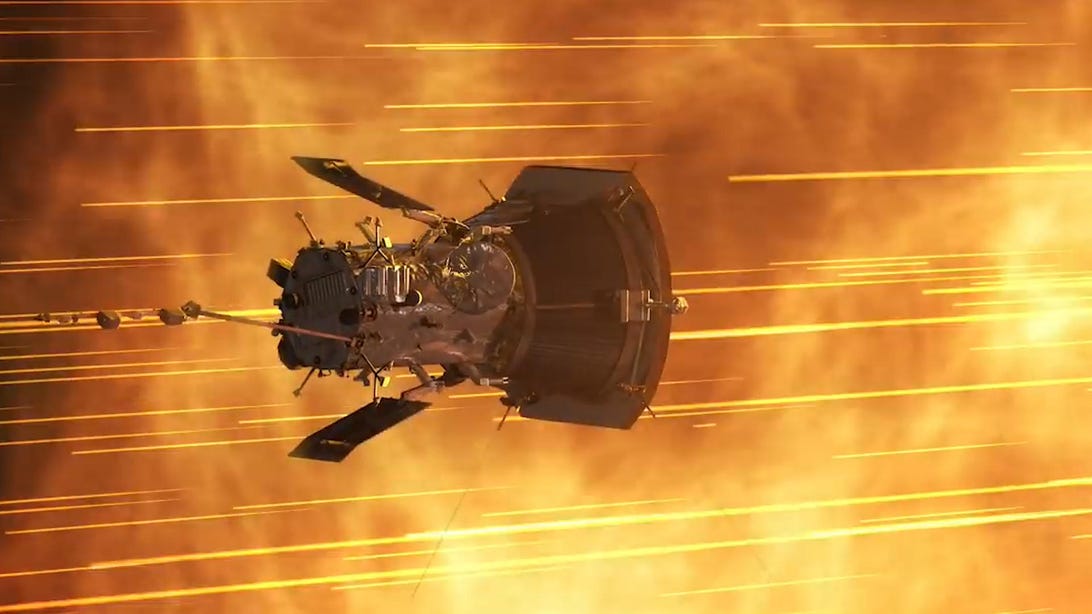
Record breaker.
NASA
Nothing built by human hands has ever travelled faster than NASA’s Parker Solar Probe, a diminutive, scorch-proof spacecraft about the size of a small car is practically “touching the sun.” In late April, it smashed two wild space records, dethroning the previous champion — which also happened to be NASA’s Parker Solar Probe — and its journey is really just beginning.
The probe, which launched in August 2018 on a mission to study the sun, has been flying ever closer to our solar system’s furnace using the planet Venus as a slingshot. On April 29, during its closest approach to the sun (known as “perihelion”), Parker was traveling at an almost unfathomable speed — enough to circle the Earth 13 times in a single hour.
Parker set two new records back in February 2020:
- Fastest human-made object: 244,255 mph (393,044 km/h).
- Closest spacecraft to the sun: 11.6 million miles (18.6 million kilometers).
But those records have now been surpassed. The new records stand at:
- Fastest human-made object: 330,000 mph (532,000 km/h).
- Closest spacecraft to the sun: 6.5 million miles (10.4 million kilometers).
Those are some strong records to hold and this isn’t the end, either. Parker should break its own record later in the year when it uses another Venus flyby to slingshot closer to the sun. Perihelion is expected to occur on Nov. 21.
Parker is already revealing some of the sun’s great mysteries. In December 2019, Parker’s first batch of data was released in the prestigious journal Nature, pulling back the (incredibly bright) curtain on the charged particles and plasma dynamics in the sun’s outer atmosphere.
Follow CNET’s 2021 Space Calendar to stay up to date with all the latest space news this year. You can even add it to your own Google Calendar.



